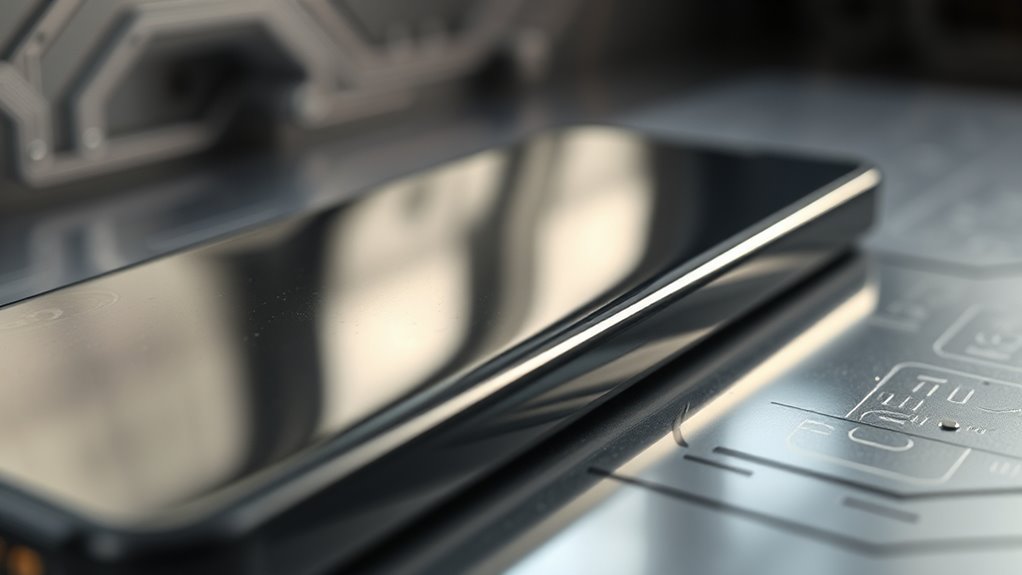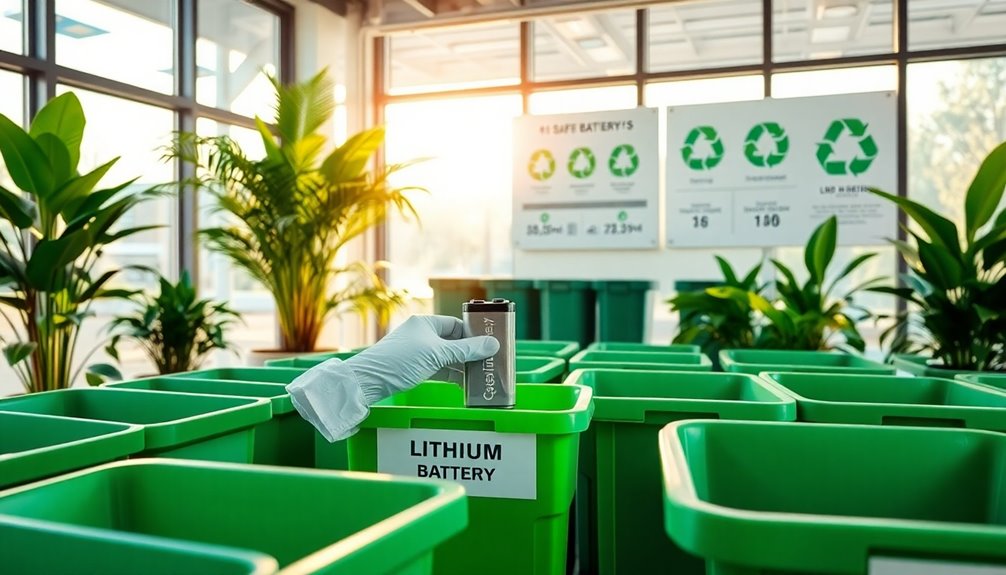When you first start using a new battery, it performs at its best, delivering maximum capacity and efficiency. During early use, microscopic changes happen inside, like the formation of thin layers that can cause a slow capacity decline over time. Factors like temperature, charge habits, and usage patterns influence how quickly these changes occur. If you want to understand how to maintain your battery’s health and extend its lifespan, keep exploring these details.
Key Takeaways
- The battery performs optimally initially, delivering maximum capacity due to precise manufacturing and healthy chemical structure.
- Early use involves ion movement, forming a stable SEI layer that enables efficient energy transfer and minimal capacity loss.
- Microscopic changes, including SEI growth and structural adjustments, begin during initial cycles, causing gradual capacity decline.
- Usage habits, temperature control, and avoiding overcharging significantly influence early degradation rates.
- High manufacturing quality and proper care extend the battery’s initial performance lifespan and slow capacity fade.

When a battery first powers your device, it’s at its peak performance, delivering maximum capacity and efficiency. This initial phase is essential because it sets the baseline for how well the battery will perform over time. During manufacturing, the process involves assembling materials like lithium, cobalt, and graphite into precise layers within the battery cells. This manufacturing process directly influences the battery’s initial capacity, which refers to the maximum amount of charge it can store when new. A well-made battery with an engineered manufacturing process will have a higher initial capacity, meaning it can hold more energy and power your device longer from the start.
As you begin using your device, the battery’s chemistry and structure work together to provide reliable energy transfer. In this early stage, the battery is most efficient, with minimal degradation or capacity loss. You might notice that your device runs longer on a full charge compared to later in its lifespan. However, even during this initial phase, subtle changes start to occur. When you charge and discharge the battery, ions move between the anode and cathode, a process that is inherently part of how batteries operate. These movements cause microscopic changes inside the battery cells, gradually leading to the formation of solid electrolyte interphase (SEI) layers and some minor structural adjustments.
While these changes are small at first, they contribute to the beginning of capacity fade. The manufacturing process aims to minimize imperfections and guarantee consistency, so your new battery performs effectively. As you use the device, the battery’s initial capacity slowly begins to decline, even if you don’t notice it immediately. Factors like temperature, charge cycles, and usage patterns influence this degradation. It’s normal for the battery’s capacity to decrease gradually with each cycle, but the rate of decline varies widely depending on how you care for it.
In the early life of a battery, the most significant aspect is maintaining good charging habits to preserve that initial capacity for as long as possible. Avoiding extreme temperatures and not overcharging can slow down the natural degradation process. Remember, the initial manufacturing quality plays a key role in how long your battery can perform well. A high-quality battery, crafted through a precise manufacturing process, will retain more of its initial capacity over time, providing dependable performance during its first life. Additionally, understanding the color accuracy of your device can help optimize your viewing experience and ensure consistent performance of your display. As you continue to use your device, being mindful of these factors helps guarantee your battery maintains its peak performance for as long as possible.
Frequently Asked Questions
How Can I Maximize My Battery’s First Lifespan?
To maximize your battery’s first lifespan, regularly calibrate it by fully charging and discharging it every few months. Avoid frequent deep discharges and keep your battery between 20% and 80% charge to reduce stress. Limit charging cycles by unplugging once it’s full, and avoid exposing your device to extreme temperatures. These habits help slow degradation, ensuring your battery stays healthier longer and performs efficiently during its first life.
Does Charging Speed Affect Battery Degradation?
Yes, fast charging can accelerate battery degradation because it generates more heat and stresses the battery’s cells. Frequent use of fast charging shortens your battery’s lifespan by increasing the number of charge cycles it undergoes. To preserve your battery, avoid always using fast charging and opt for regular charging speeds whenever possible. This helps reduce heat buildup and extends the overall health of your battery over time.
What Is the Ideal Temperature for Battery Use?
Ever wonder what the ideal temperature for battery use is? Maintaining a temperature around 20-25°C (68-77°F) is best, as it supports superior thermal management and reduces degradation. Too hot or cold ambient conditions can harm your battery’s lifespan. To keep it healthy, avoid exposing your device to extreme temperatures and ensure good airflow. Proper thermal management helps your battery perform well and last longer.
Can Software Updates Improve Battery Longevity?
Yes, software updates can improve your battery’s longevity by enhancing battery calibration and firmware optimization. These updates help your device better manage power consumption and accurately report charge levels, preventing overcharging or deep discharges. By regularly installing updates, you guarantee your battery operates efficiently, reducing degradation over time. Keep your device’s software current to maximize battery health and extend its effective lifespan.
How Do Different Usage Patterns Impact Battery Health?
Think of your battery like a marathon runner—your usage patterns determine its stamina. Heavy usage with frequent full charge cycles accelerates degradation, much like overexerting a runner wears them out faster. Conversely, moderate, mindful usage preserves battery health longer. High-intensity activities drain the battery quicker, reducing overall lifespan, while gentle use extends it. By managing charge cycles and avoiding extreme usage, you help keep your battery in peak condition longer.
Conclusion
During a battery’s first life, you use it, you charge it, and you rely on it. You watch it power your devices, you trust it to perform, and you notice how it gradually degrades. You experience the cycle of usage, the process of aging, and the inevitable decline. But through it all, you learn how each moment, each charge, and each discharge shapes its story—reminding you that even in decline, there’s a story of purpose and potential.










